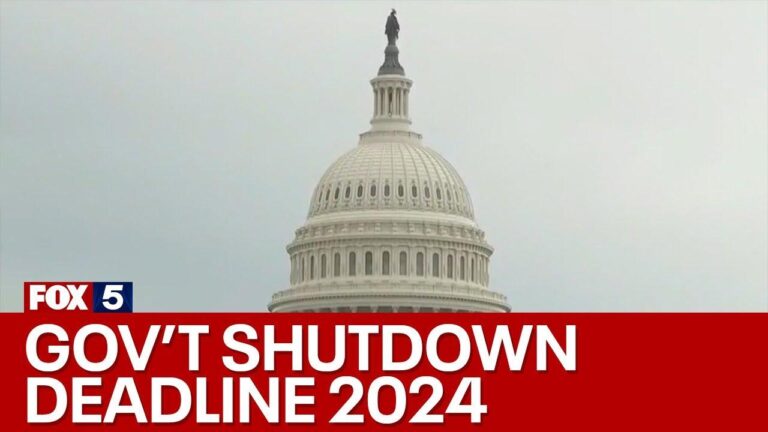The U.S. government is teetering on the edge of its first shutdown in seven years as lawmakers struggle to reach a funding agreement. With key budget deadlines looming, uncertainty is mounting over the potential halt of federal operations, which could disrupt services and impact millions of Americans. This article breaks down the latest developments, the stakes involved, and what comes next as Washington braces for a possible government shutdown.
U.S. Government Faces Imminent Shutdown Amid Budget Deadlock
The stalemate in Congress over the federal budget has escalated, pushing the U.S. government toward a shutdown for the first time in nearly a decade. Lawmakers remain deeply divided on key issues including defense spending, social programs, and immigration policies. Without swift bipartisan agreement, essential government operations could grind to a halt, affecting millions of Americans.
Key consequences of a potential shutdown include:
- Closure of national parks and museums
- Delayed processing of federal benefits and permits
- Furloughs for hundreds of thousands of federal employees
- Disruption in services such as air traffic control and public health monitoring
| Stakeholder | Impact | Expected Duration |
|---|---|---|
| Federal Workers | Possible unpaid furloughs | Indefinite |
| General Public | Limited access to federal services | Weeks or months |
| Government Contractors | Payment delays | Until funding is restored |
Impact on Federal Services and Public Programs
A government shutdown could lead to widespread disruptions across numerous federal services that millions of Americans rely on daily. Critical departments such as the Social Security Administration, the Veterans Affairs, and the Centers for Disease Control and Prevention are expected to scale back operations immediately. Citizens may experience delays in processing crucial benefits like Social Security payments, veteransŌĆÖ healthcare appointments, and disease outbreak responses. Furthermore, national parks and museums could close, impacting tourism and local economies.
Public programs that support lower-income families and individuals, including food assistance initiatives and housing subsidies, face potential interruptions. The ripple effect of this shutdown will extend beyond just government employees, affecting private contractors, nonprofit organizations, and community programs tied to federal funding. Key anticipated impacts include:
- Delayed unemployment benefits for those recently out of work.
- Pausing of new applications and renewals for Medicaid in some states.
- Reduced operational capacity at federal law enforcement and emergency response agencies.
- Suspension of grants and research funding affecting universities and hospitals.
| Service | Possible Impact |
|---|---|
| Social Security | Payment delays, limited customer support |
| National Parks | Temporary closures |
| Veterans Affairs | Reduced medical services |
| Food Assistance | Application freeze, fewer resources |
Key Factors Driving the Political Stalemate
The deadlock in Congress stems primarily from a clash over federal spending priorities, with Democrats focusing on social programs and climate initiatives, while Republicans push for increased defense funding and stringent immigration controls. This ideological rift has been exacerbated by recent election outcomes that have altered the balance of power in both chambers, making bipartisan agreements more elusive. Legislative leaders are under intense pressure to find compromises, but entrenched partisan divisions and external political pressures have so far hindered progress.
Several additional elements contribute to the impasse, including:
- Economic concerns: Disputes over budget deficits and debt ceiling limits add complexity.
- Public opinion: Lawmakers face fluctuating voter expectations that influence their negotiation stances.
- Internal party discord: Factions within each party exert opposing demands, complicating consensus-building efforts.
| Factor | Impact | Outlook |
|---|---|---|
| Spending Priorities | High | Continued debate expected |
| Partisan Polarization | Severe | Potential escalation |
| Economic Pressures | Moderate | Intensifying towards midyear |
Strategies for Citizens and Businesses to Prepare
In the face of a looming government shutdown, individuals and businesses need to adopt proactive measures to minimize disruption. Citizens should prioritize essential financial preparations, including conserving cash reserves and ensuring access to emergency funds as delays in government services and benefit distributions are anticipated. It’s also advisable to stay informed via official channels to understand which government functions may continue and which might pause, enabling better personal planning. For those reliant on federal services, having alternative arrangements such as private healthcare or supplemental insurance can ease potential hardships.
Businesses, especially those dependent on federal contracts or regulatory approvals, must anticipate delays by reviewing current procurement processes and adjusting timelines accordingly. ItŌĆÖs prudent to communicate with clients and suppliers about possible interruptions to maintain transparency and trust. Implementing contingency plansŌĆösuch as shifting workloads, adjusting staffing, or diversifying revenue streamsŌĆöcan help navigate uncertain periods. Below is a simple readiness checklist that entities can adopt:
| Preparation Area | Recommended Actions |
|---|---|
| Financial Management | Boost liquidity, review budgets, delay non-essential expenditures |
| Communication | Inform stakeholders, provide frequent updates |
| Operations | Identify critical functions, adjust workflows, prepare for reduced government interaction |
| Legal & Compliance | Monitor regulatory changes, consult legal advisors on contract impacts |
The Way Forward
As the U.S. government edges closer to a shutdown for the first time in seven years, the ramifications could ripple across domestic and international spheres. Lawmakers remain under intense pressure to reach a funding agreement to avert widespread disruptions. Staying informed on developments will be crucial as the deadline approaches, with potential impacts spanning federal operations, services, and economic stability. Global News will continue to provide timely updates on this unfolding story.




